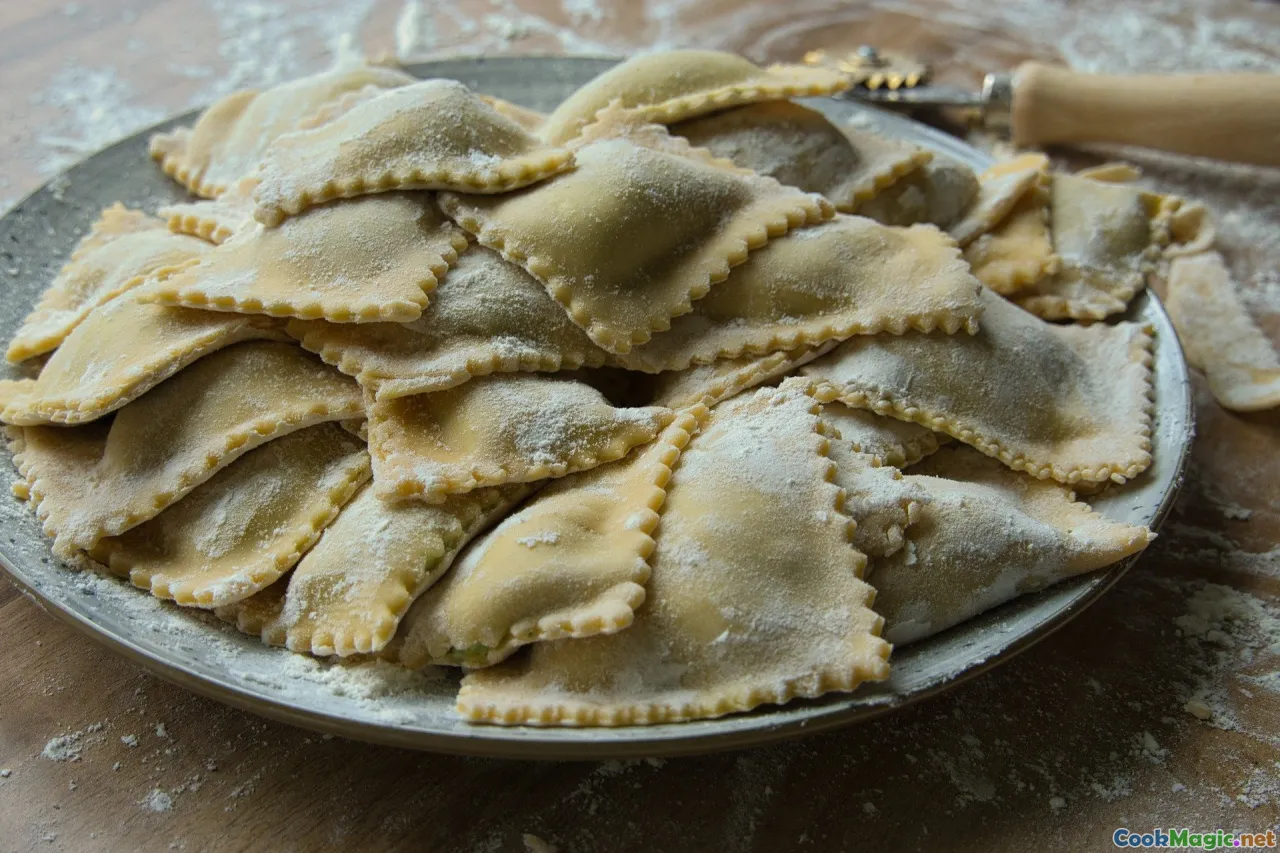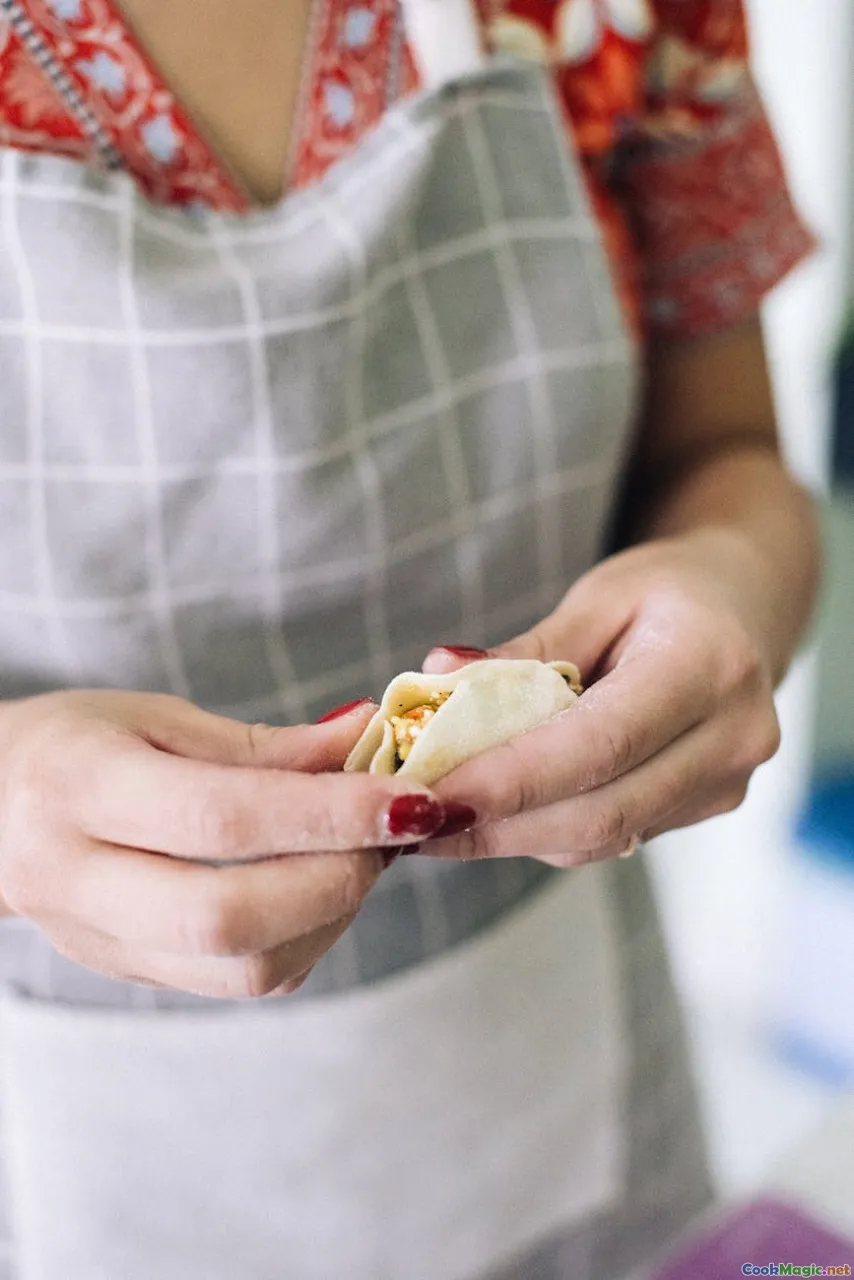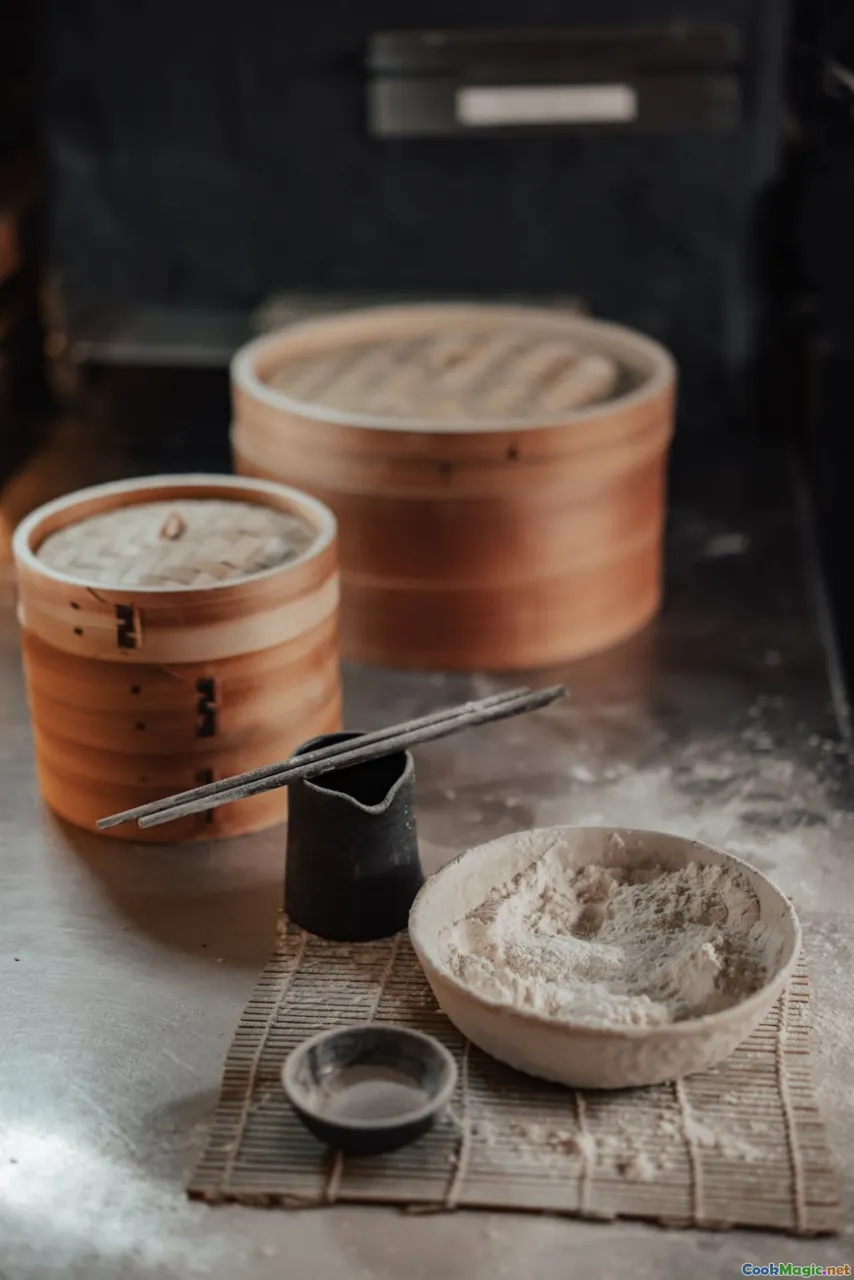Manti Techniques Folding Uzbek Meat Dumplings
12 min read Learn authentic methods for folding Uzbek Manti, traditional meat-filled dumplings, to perfect your culinary skills and honor cultural heritage. August 31, 2025 15:05
The Soul of Uzbek Manti: A Cultural Embrace in Every Fold
 In the bustling markets and quiet village courtyards of Uzbekistan, the aroma of freshly steamed manti drifts like a warm breeze that carries the echoes of centuries-old traditions. These delicate, pillowy parcels of seasoned meat wrapped in dough are more than just food; they are a woven tapestry of history, love, and identity. As someone deeply rooted in culinary exploration, I find that mastering the art of folding manti is akin to learning a secret handshake—an intimate gesture that connects you to ancestors and genuine Uzbek hospitality.
In the bustling markets and quiet village courtyards of Uzbekistan, the aroma of freshly steamed manti drifts like a warm breeze that carries the echoes of centuries-old traditions. These delicate, pillowy parcels of seasoned meat wrapped in dough are more than just food; they are a woven tapestry of history, love, and identity. As someone deeply rooted in culinary exploration, I find that mastering the art of folding manti is akin to learning a secret handshake—an intimate gesture that connects you to ancestors and genuine Uzbek hospitality.
The story of manti begins long ago on the Silk Road, where it's said traders and nomads carried this nourishing dish across vast deserts and mountains. Its enduring popularity in Uzbekistan is a testament to its comforting power—a perfect symphony of textures, flavors, and cultural symbolism. But behind the soulful taste lies a dance of techniques, precision, and artistry that transforms simple ingredients into edible poetry.
Navigating the Dough: The Foundation of Manti
 The journey to perfect manti unfolds the moment you start preparing the dough. Uzbek manti dough is typically made with minimal ingredients: high-quality wheat flour, warm water, a pinch of salt, and sometimes a splash of oil. The process begins with sifting the flour onto a clean work surface, creating a small well at its center. Slowly, water is poured in, and with fingers or a dough scraper, the mixture is kneaded into a smooth, elastic ball.
The journey to perfect manti unfolds the moment you start preparing the dough. Uzbek manti dough is typically made with minimal ingredients: high-quality wheat flour, warm water, a pinch of salt, and sometimes a splash of oil. The process begins with sifting the flour onto a clean work surface, creating a small well at its center. Slowly, water is poured in, and with fingers or a dough scraper, the mixture is kneaded into a smooth, elastic ball.
The secret to tender manti lies in the kneading—punching, folding, and stretching until it’s supple enough to hold a generous filling yet resilient enough to withstand steaming. Unlike pasta dough, uzbek manti dough isn't rolled too thin; a slight thickness ensures the dumpling maintains its structure during steaming.
Personal insight: I often rest the dough under a damp cloth for at least 30 minutes—this relaxes gluten strands, leading to a more pliable, flavorful pastry that yields a delightfully tender bite in every morsel.
The Filling: A Symphony of Flavors
 Authentic manti filling is a savory symphony—preferably using lamb or beef, sometimes mixed with onions and garlic for balance and depth. In Uzbekistan, the legend of a good manti flavor often begins with fresh, high-quality meat, ground twice for a refined texture that melts smoothly during steaming.
Authentic manti filling is a savory symphony—preferably using lamb or beef, sometimes mixed with onions and garlic for balance and depth. In Uzbekistan, the legend of a good manti flavor often begins with fresh, high-quality meat, ground twice for a refined texture that melts smoothly during steaming.
Often, finely chopped onions are sautéed until translucent, then cooled before mixing with the meat. This step imparts a subtle sweetness, balancing the richness of the meat. Seasonings are kept simple: salt, black pepper, and sometimes a pinch of cumin or coriander—earthy spices that evoke the warmth of the Uzbek steppes.
In some regions, you might find variations with kurt (fermented) vegetables or herbs like dill or coriander added into the filling, elevating the dish with fresh, aromatic notes that contrast beautifully with the savory meat.
Crafting the Perfect Fold: A Step-by-Step Guide
 Learning how to fold manti is tantamount to mastering an art form. Traditional techniques are passed from generation to generation, each adding subtle personal touches. Here is a step-by-step process that, once practiced, becomes almost meditative:
Learning how to fold manti is tantamount to mastering an art form. Traditional techniques are passed from generation to generation, each adding subtle personal touches. Here is a step-by-step process that, once practiced, becomes almost meditative:
- Divide the Dough: After resting, roll the dough into a thin sheet about 2-3 mm thick. Use a sharp knife or a round cutter (about 8-10 cm in diameter) to cut into even circles.
- Place the Filling: Using a teaspoon, place a small mound of meat filling roughly in the center of each circle, ensuring it isn't too close to the edges.
- Initial Fold: Pick up the circle and fold it in half to form a semi-circle, pinching the edges gently to seal.
- Create the Pinched Edge: Starting from one corner, gather a small strip of dough and pinch it onto the adjacent side. Repeat this pinching and folding along the edge, creating a series of small, even pleats. This technique not only seals the dumpling tightly but also creates a beautiful textured edge.
- The Top Knot: When you reach the end, pinch firmly to seal the shape into a teardrop or cylindrical form, depending on regional style.
Personal tip: For an extra decorative touch, gently crimp the pleats with your fingertips or use a special manti folding tool. It’s this intricate fold that creates the characteristic look of authentic Uzbek manti, inviting both admiration and anticipation.
Steaming: The Heart of Manti Cooking
 The most iconic method of cooking manti is steaming, a process that gives the dumplings their soft, tender texture and a luminous appearance. Traditionally, a multilevel steamer or a large, lined samovar accomplishes this task.
The most iconic method of cooking manti is steaming, a process that gives the dumplings their soft, tender texture and a luminous appearance. Traditionally, a multilevel steamer or a large, lined samovar accomplishes this task.
Before steaming, it's crucial to line the steaming trays with thin cloth or cabbage leaves to prevent sticking—and to ensure even heat transfer. The manti are carefully arranged so they don’t touch, which helps maintain their shape and prevents them from sticking together.
The steaming process typically takes about 40-50 minutes, during which the gentle heat penetrates through the dough, cooking the filling uniformly while preserving juiciness and tenderness. A peek after 30 minutes reveals the translucent, slightly glossy manti, promising delight in every bite.
Pro tip: After steaming, lightly brush the manti with melted butter infused with sharq (a fragrant Uzbek spice blend) or garlic to enhance flavor and add a glossy finish.
Celebrating Manti: The Artful Serving and Rituals
 Manti consumption is a communal affair—served steaming hot on large round trays or platters, garnished with fresh herbs, a squeeze of lemon, or a dollop of tangy yogurt. The experience goes beyond taste; it embodies Uzbek hospitality and familial bonds.
Manti consumption is a communal affair—served steaming hot on large round trays or platters, garnished with fresh herbs, a squeeze of lemon, or a dollop of tangy yogurt. The experience goes beyond taste; it embodies Uzbek hospitality and familial bonds.
In traditional settings, manti are sliced open with a small spoon or knife, revealing the juicy meat filling inside—a burst of steam and flavor that awakens the senses. Accompanying ingredients like pickled vegetables, radish, and homemade bread complement the richness.
Personal tradition: In my travels through Uzbekistan, I’ve been fortunate to share manti in small mountain villages, where grandmothers skillfully fold by hand while recounting stories. Their mastery transforms humble ingredients into an edible celebration—an homage to resilience, love, and craftsmanship.
Final Tips for Manti Enthusiasts
- Use fresh, high-quality meat and flour. These elevate the entire experience.
- Don’t rush the resting period of the dough. Relaxing gluten approximation results in tender dumplings.
- Practice your pleats along the edges. The visual appeal is part of the dish’s soul.
- Experiment with fillings. Try adding herbs, spicy peppers, or kurt to personalize your manti.
- Steam in batches. Overcrowding causes uneven cooking.
In mastering the techniques of folding Uzbek manti, you don’t just cook—you step into a rich tapestry of history, culture, and personal artistry. Each fold, each dumpling, is a quiet story of tradition passed through hands and heart into every steaming pono—a testament to how food truly connects us all.
May your culinary journey into Uzbek manti be filled with patience, humor, and plenty of delicious surprises. When perfected, these tender parcels will not only satisfy your palate but also keep alive an ancient recipe that’s been cherished across generations.
Enjoy the process, savor the flavors, and share the warmth of Uzbek hospitality—one perfect manti at a time.









